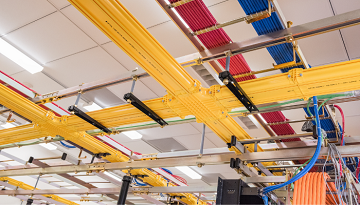
OM4 has been around for a long time, and if you remember when it was first introduced, data centers did not immediately start ripping and replacing OM3. It took OM4 5-6 years to overtake OM3 in the data center. OM4 is a good solution for the current network demands and if you are operating a data center, or anything with a network, you need to be looking at what’s next to stay current.
One of the many nice features of OM5 fiber is that it doesn’t forget the past. It is backwards compatible with its OM4 and OM3 siblings, so you can upgrade to OM5 without replacing other two. The importance of OM5 fiber will increase in tandem with the evolution of the data center to 400G and beyond. While OM5 offers benefits today, it will take the evolution to 400G Ethernet to use the full power of OM5. This is one of the many factors you should consider to ensure your data center is ready for the future.
Another value of using OM5 is that it provides higher capacity per fiber, resulting in less fibers and longer reach in an SWDM application. The extended reach in 100G and 400G application with an SWDM is 50% farther than OM4 and in 400G, plus it uses 50% less fibers.
For a technical deep dive into OM5 and its importance in the data center, please watch the video explanation below by CommScope’s solution architect, Hans-Juergen (HJ) Niethammer, and check out our other WideBand Multimode Fiber content.













